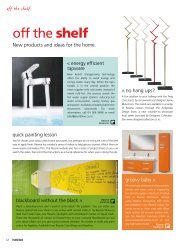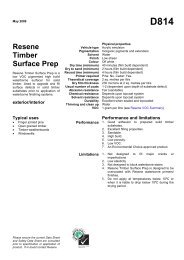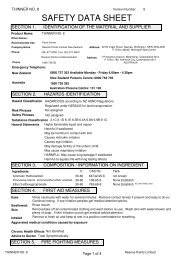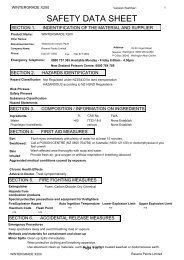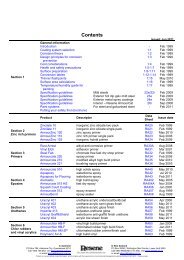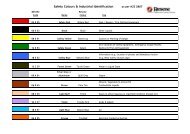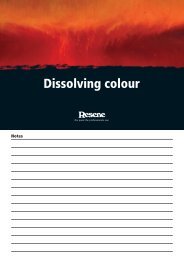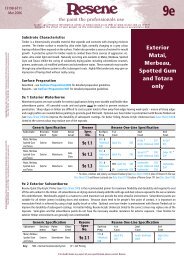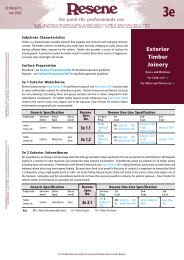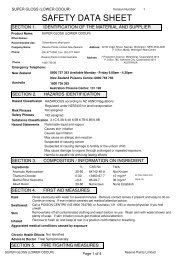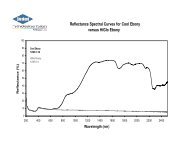Putting your safety first - Resene
Putting your safety first - Resene
Putting your safety first - Resene
- No tags were found...
You also want an ePaper? Increase the reach of your titles
YUMPU automatically turns print PDFs into web optimized ePapers that Google loves.
Donate:Donate to charityIf you just can’t use <strong>your</strong> leftover paint, donate itto local community groups, schools, art groups andso on. You’ll save them money and get the bestuse out of <strong>your</strong> paint leftovers at the same time.Don’t mix waterborne and solventborne paints. Ifmixed, paint cannot be re-blended or reused.Make sure you donate the paint in its originalcontainer with the contents clearly marked so therecipient knows what they are receiving and howto handle it. Always check paint before you donateit to ensure it is still in good condition. It’s best todonate paint as soon as you discover you don’tneed it, such as when you change <strong>your</strong> colourscheme, rather than holding onto it just in case.Handle with careProperly sealed solvents and thinners have analmost unlimited shelf life. Keep and use.Solventborne paints require special disposalpractices. They are also ignitable and present otherhazards. These products must never be poureddown storm drains, the household sink (especiallyif you have a septic tank) or on the ground.Solventborne paint should be disposed of as ahousehold hazardous waste. Hold for a ‘householdhazardous waste collection day’. If <strong>your</strong> localcommunity does not undertake such programmes,contact <strong>your</strong> local Council for disposal guidance.Paint thinners, turpentine, mineral spirits andsolvents should never be poured down a drain orthe storm sewer. With the following simple steps,you can re-use these types of products. Let usedturpentine or brush cleaners sit in a closed containeruntil the paint particles settle out. Then pour offthe clear liquid, which can be reused. Add anabsorbent material, such as the PaintWise DisposalKit material or kitty litter, to the remaining residueuntil it becomes dry. Finally, contact <strong>your</strong> localCouncil for guidance on disposal.Other environment savers to tryBuy <strong>Resene</strong> Environmental Choiceapproved productsThese meet specific conditions endorsed by theMinistry for the Environment. Look for theEnvironmental Choice tick on <strong>Resene</strong> paintcontainers.Buy good quality paintLower quality paint while cheaper in the short runis a false economy. It will break down quickernecessitating a repaint earlier. The biggest cost ofany painting job is the labour - whether this is apainter you hire to do the job for you or <strong>your</strong>investment of time. It is better to spend a littlemore on the paint and get a longer life from itthan to try to save a few dollars and take years offthe paint finish.Similarly, if you buy a lower quality paint with anexpected life of 4-5 years, this means over a 8 yearperiod you will probably have to paint twice. Incontrast if you bought a high quality paint with anexpected life of 7-8 years you would only need topaint once during this period. The burden on theenvironment is considerably less with the higherquality paint.Save unnecessary washing up.Wrap <strong>your</strong> brush in plastic wrap or place <strong>your</strong> rollerin a plastic bag, squeeze out the air and tie thebag securely around the handle of the roller usinga rubberband or tie top. This will keep the paintfresh while you are taking a break and will saveyou having to rinse out brushesand rollers repeatedly.Refer to the <strong>Resene</strong> DIY info leafletson how to calculate the paint you needand how to clean brushes and rollersor visit the <strong>Resene</strong> website for ideas.21



